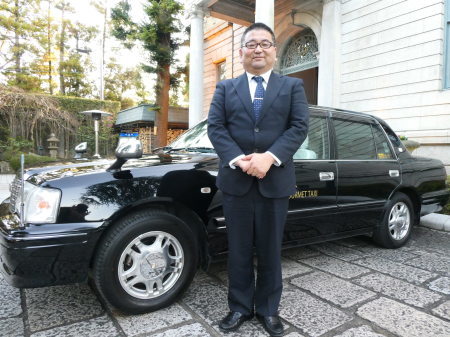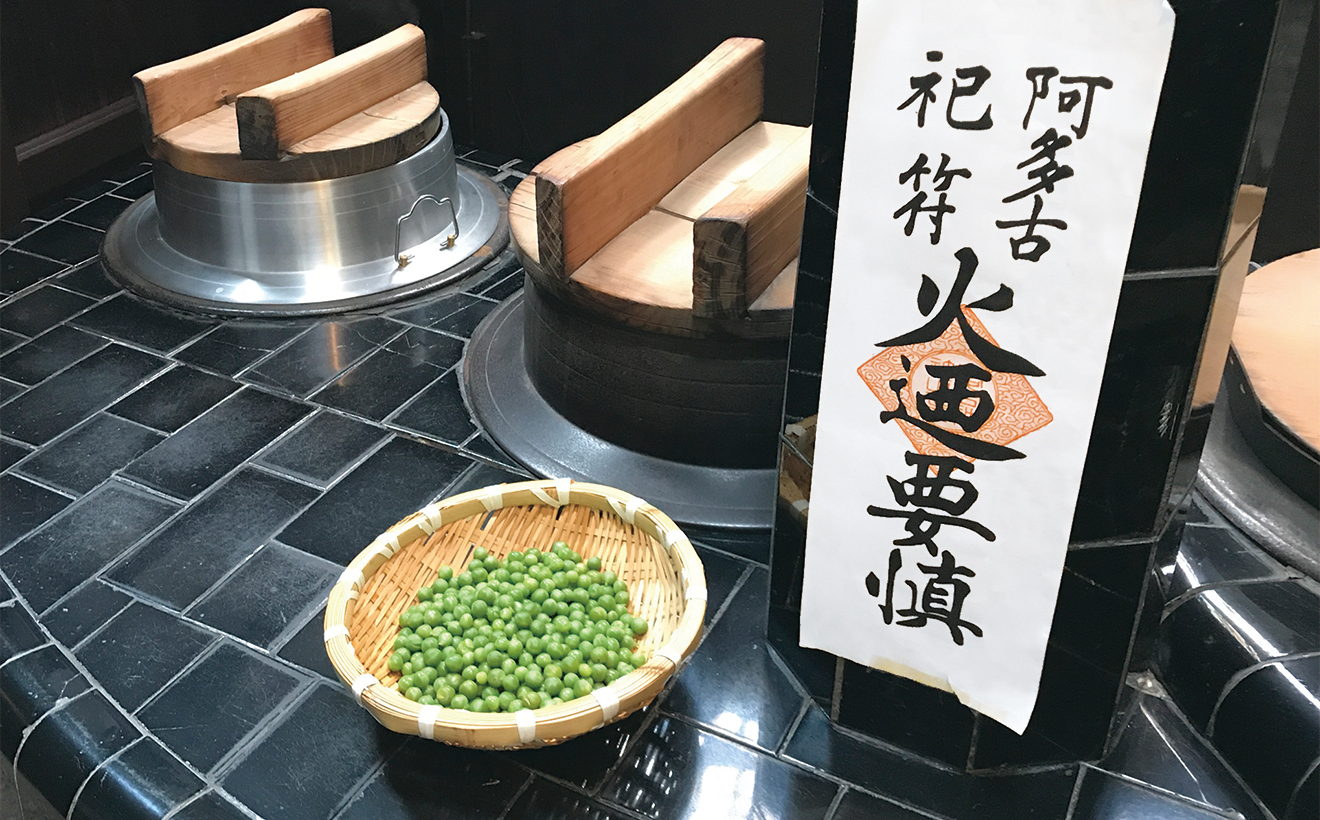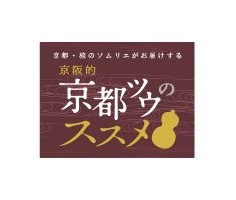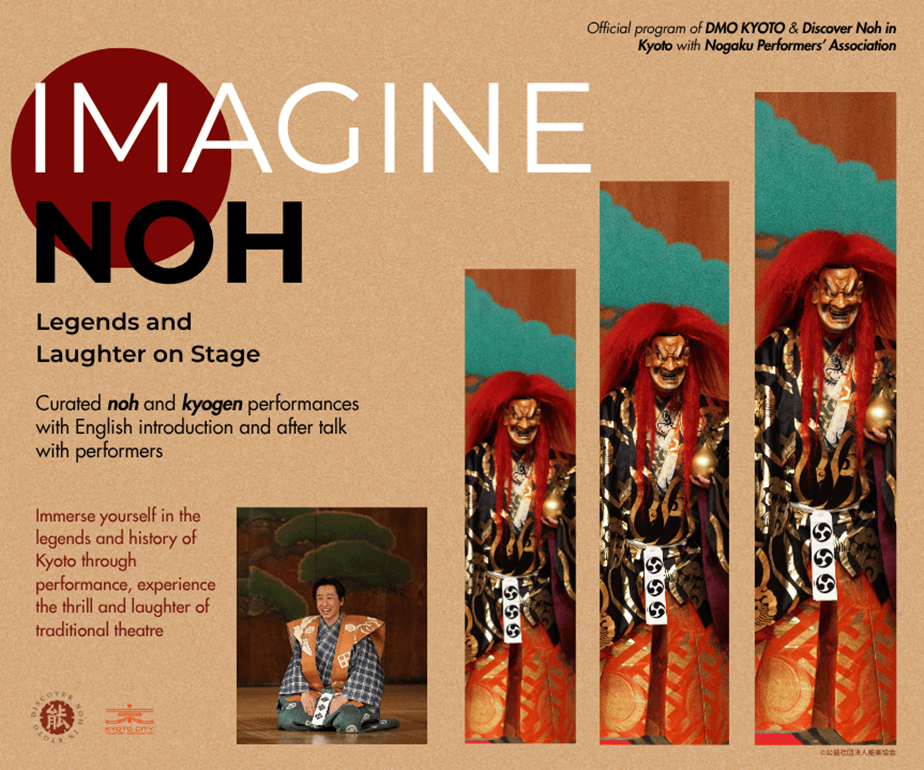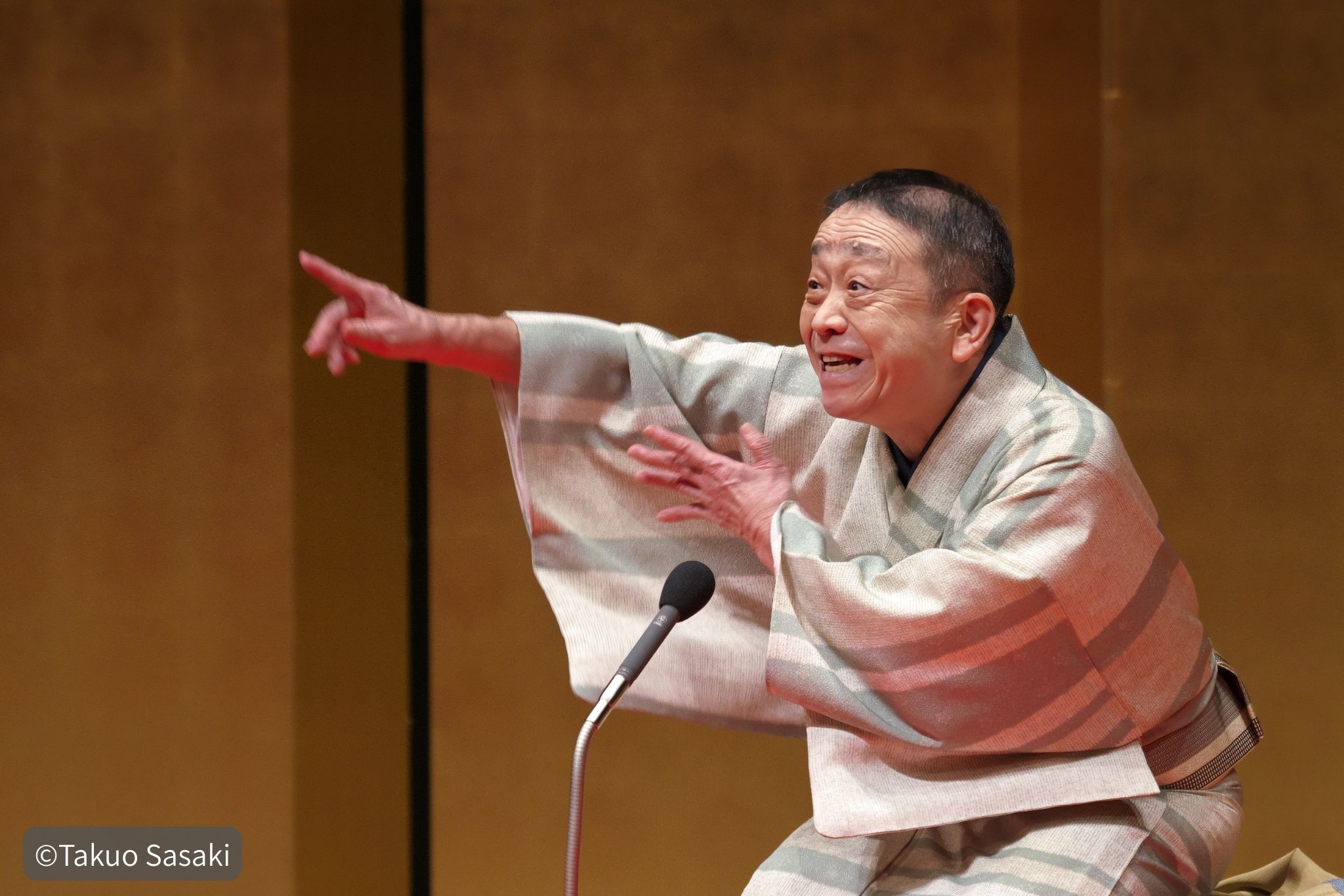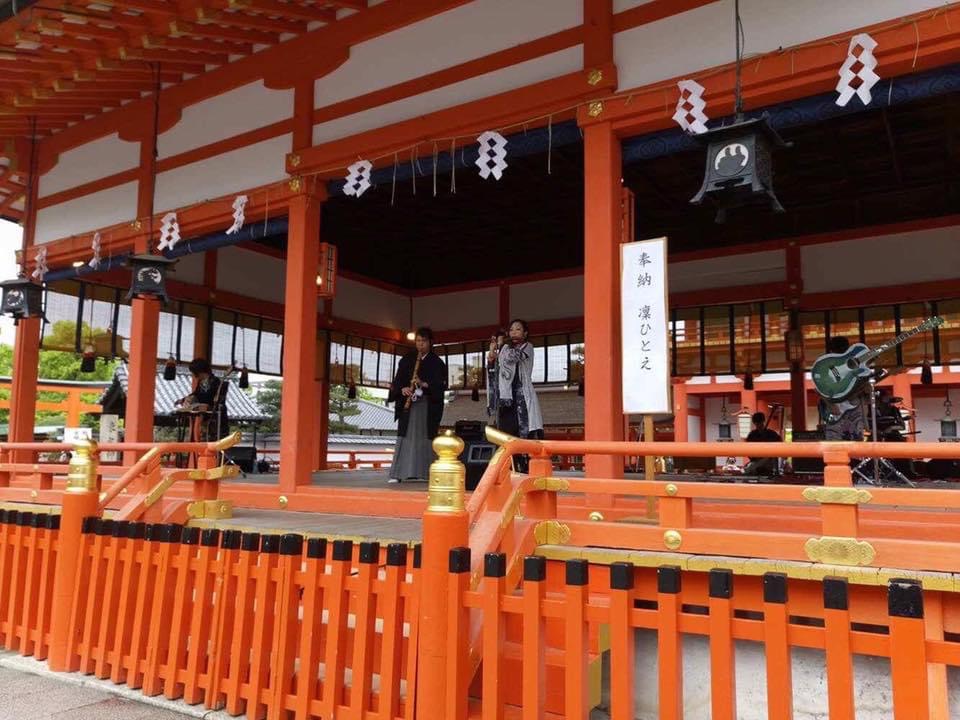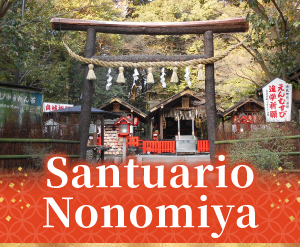
Diseñando en Kioto, la ciudad que conoce el espíritu de la artesanía
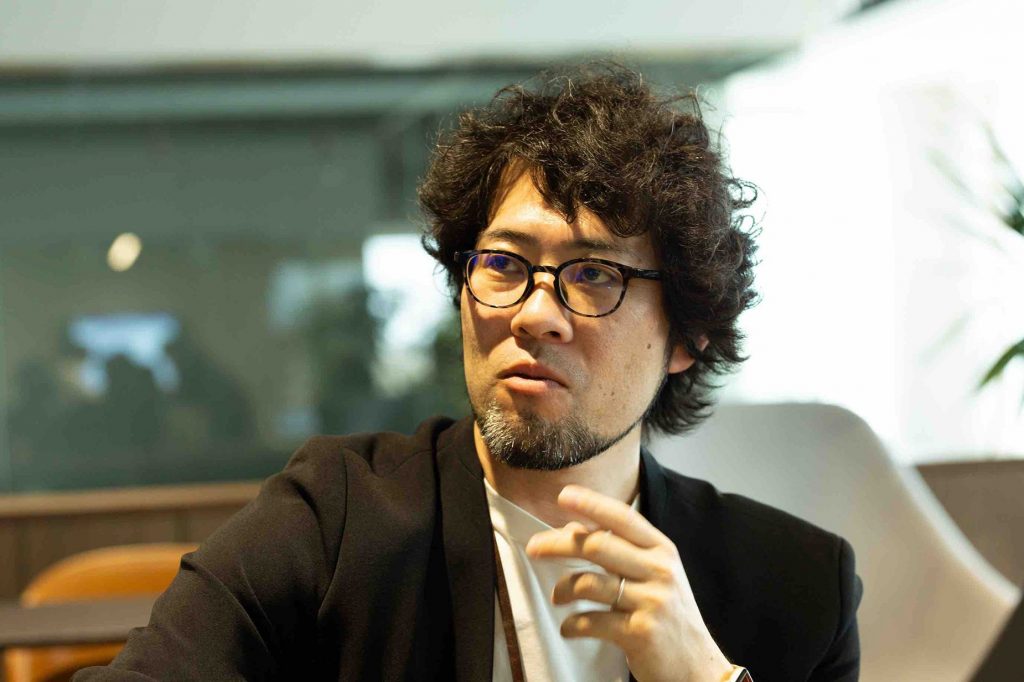
Hitoshi Nakagawa, departamento de diseño de entretenimiento, Centro de Diseño de Appliances Company
En la octava planta, con vistas a la ciudad de Kioto, el espacio de reuniones de Panasonic Design Kyoto, el "HUB", podría confundirse fácilmente con una elegante cafetería o el vestíbulo de un hotel. Hitoshi Nakagawa, del departamento de diseño de entretenimiento de Appliances Company Design Center, nos recibió con una amable sonrisa. Nakagawa es uno de los diseñadores de mediana edad de la empresa, dedicado principalmente al desarrollo y diseño de sistemas de audio. Le pregunté por qué se había elegido Kioto como sede del diseño.
Kioto cuenta con una larga historia que ha dado origen a una versátil cultura tradicional, por lo que la consideramos la "capital cultural" de Japón. Especialmente en cuanto a la cantidad de personal en los campos tradicionales, no tiene igual. Además, Kioto está inmerso en un ambiente académico gracias a sus numerosas universidades, por lo que los proyectos de investigación y desarrollo entre la industria y la universidad son muy activos aquí. El reconocimiento mundial de la ciudad también está atrayendo la atención de diseñadores extranjeros que piensan que "Kioto sería un lugar donde vale la pena trabajar". Creo que el reconocimiento mundial de Kioto permite cultivar el diseño en su esencia.
Con su centro de diseño basado en Kioto, ahora están intentando abordar el diseño de electrodomésticos desde una perspectiva holística, fortaleciendo la cooperación horizontal para reformarse en un equipo de diseño que no solo diseñará el producto, sino que también diseñará para crear nuevos "valores de experiencia".

Sofás y mesas cómodamente dispuestos en el centro, cabinas ubicadas aleatoriamente para reuniones y espacios de trabajo personales y diversas plantas de follaje hacen del HUB un espacio cómodo y aireado.
Creando nuevos productos que mejorarán nuestro estilo de vida futuro
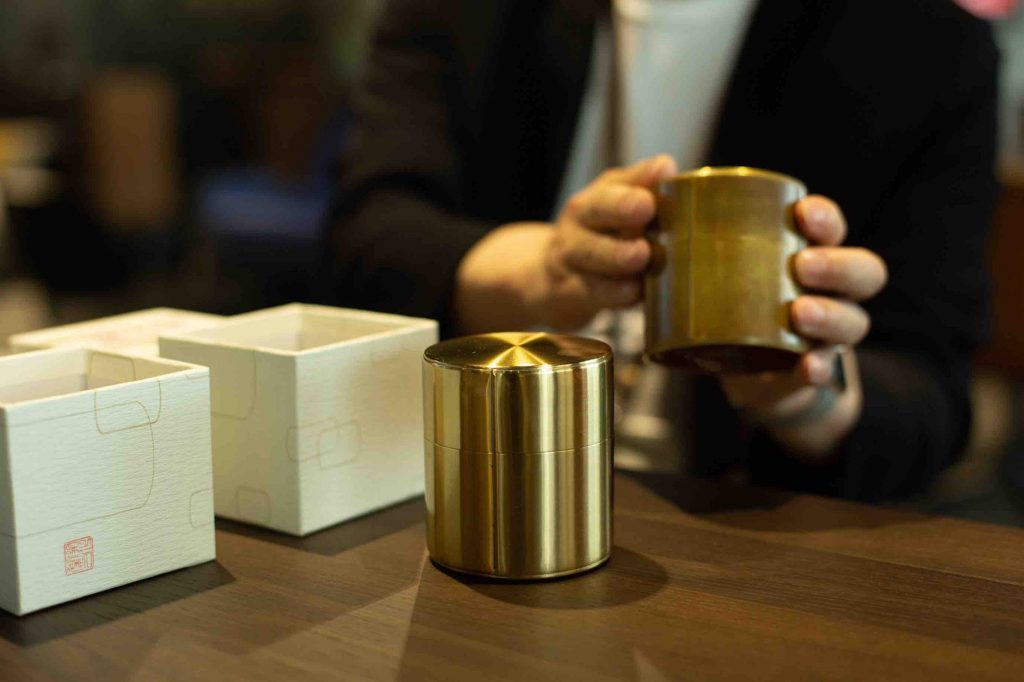
Parece una caja de té KAIKADO de latón, pero hay una sorpresa en su interior.
Para la entrevista, se colocaron sobre la mesa dos cajas de té de KAIKADO, la consolidada tienda de cajas de té de Kioto. Han alcanzado reconocimiento mundial por su excepcional funcionalidad, gracias a la elegante forma en que la tapa se desliza hacia abajo para cerrarse, y por su hermoso diseño, que expresa la esencia de la artesanía de Kioto. Una de las cajas de té lucía un sutil brillo gracias a su uso a lo largo de los años, y la otra, un brillo radiante como nueva.
Nakagawa tomó la nueva en su mano y abrió la tapa con cuidado. Lo que siguió me sorprendió. El sonido de la música fluía de la caja de té. ¿Era realmente música de una caja de té? ¿Era realmente una caja de té? ¿O era un altavoz? Claro, nunca antes había visto un altavoz en una caja de té. La primera experiencia de mirar, escuchar y sentir fue tan sorprendente que me quedé sin palabras. Además, esta creación completamente nueva tenía el extraño atractivo nostálgico de la sensibilidad japonesa. ¿Cómo surgió semejante objeto?
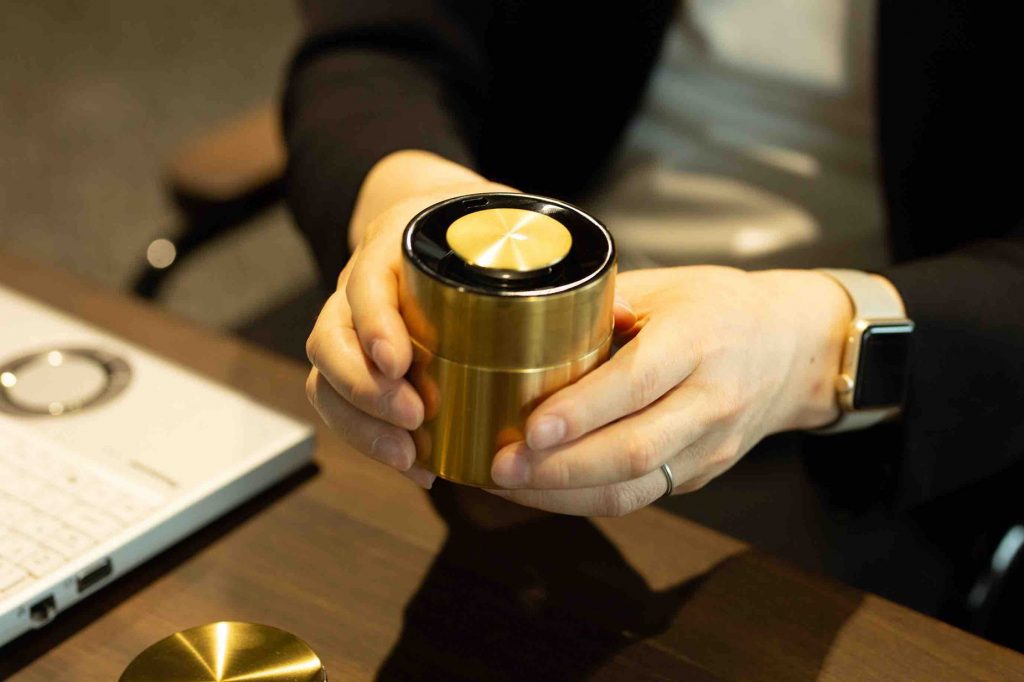
¡Hay un altavoz incorporado en el interior!
Este altavoz, llamado Kyo-Zutsu, fue uno de los productos de la primera serie del proyecto KADEN Lab de Panasonic en Kioto. Fue un producto diseñado para "imaginar la nueva definición de 'vivir bien' en el futuro".
Tres años antes de la inauguración de Panasonic Design Kyoto, en noviembre de 2015, se lanzó el proyecto Kyoto KADEN Lab., un proyecto de coproducción destinado a explorar el origen de la artesanía y la sensibilidad japonesa en colaboración con las industrias tradicionales de Kioto. Como primer proyecto de la serie, los seis miembros de GO ON, una colaboración conjunta entre los sucesores de la artesanía tradicional de Kioto, y los diseñadores de Panasonic Design, como Nakagawa, colaboraron en la investigación y el desarrollo para explorar el futuro de los electrodomésticos y la artesanía.
Por un lado, hay expertos en la creación de artículos para el hogar prácticos y de hermoso diseño, con sus habilidades prácticas y la sensibilidad transmitida de generación en generación. Por otro lado, hay expertos en proporcionar medios para un estilo de vida más cómodo y práctico mediante la investigación, el desarrollo y la producción de electrodomésticos. El proyecto se puso en marcha gracias a dos grupos con trayectorias contrastantes: artesanía y producción en masa, personas individuales (tiendas individuales) y diseñadores corporativos, que se unieron en la búsqueda de un estilo de vida más pleno y mejor a través de herramientas y objetos cotidianos.
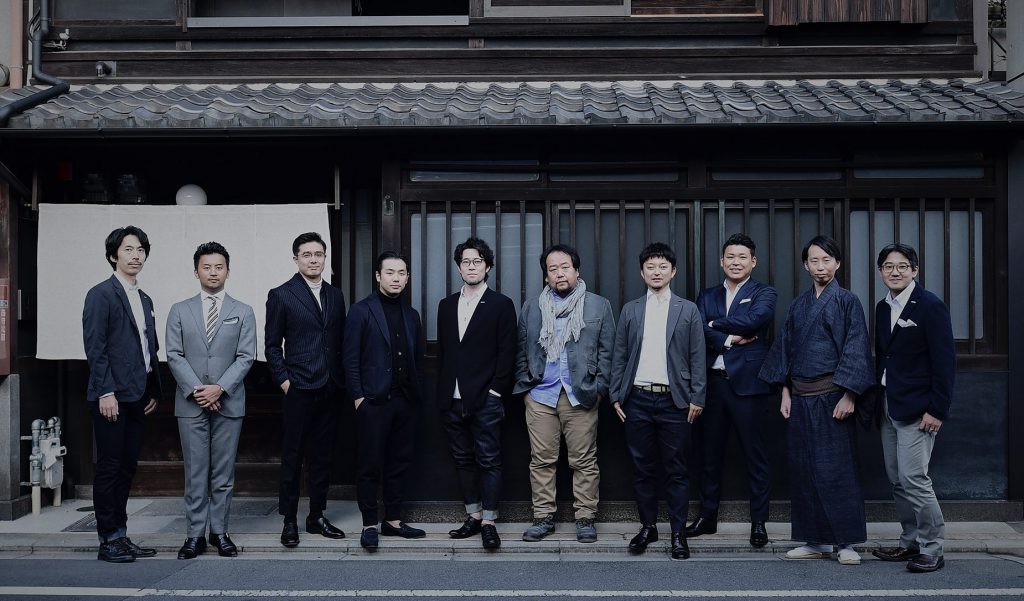
GO ON es una colaboración conjunta de jóvenes propietarios y sucesores de empresas consolidadas en el campo de la artesanía tradicional, incluyendo el brocado Nishijin, la cerámica, la artesanía en bambú, los cubos de madera de oke y los tejidos de metal. Los diseñadores de Panasonic son un grupo de diseñadores de productos que diseñan artículos como aspiradoras, electrodomésticos, sistemas de audio y aires acondicionados. (Foto cortesía de Panasonic Design Kyoto)
Desafiar las diferencias resulta en una mayor sensibilidad y energía
El primer concepto del proyecto fue "La electrónica se une a la artesanía". Bajo este concepto, el equipo desarrolló diez prototipos de "electrodomésticos que evocan recuerdos y estimulan los cinco sentidos".
Queríamos empezar preguntándonos juntos: "¿Qué significa vivir verdaderamente bien?". Así que empezamos con un retiro en el templo Ryosoku-in y practicando meditación zen (risas). Queríamos replantearnos nuestros valores opuestos respecto a la electrónica y la artesanía para empezar de cero desde una perspectiva completamente clara y fresca.
Todos los miembros reconocieron el significado y el valor del proyecto. Sin embargo, no fue un camino de rosas desde el principio, debido a una diferencia crucial en la forma en que abordamos nuestro trabajo: las direcciones en las que buscábamos eran completamente opuestas.
Como diseñadores de una empresa manufacturera, siempre se espera que creemos algo nuevo y siempre estamos a la vanguardia de la innovación. Por el contrario, el principio básico de los artesanos es profundizar en la búsqueda incansable de la perfección y el refinamiento. Nosotros decidimos el precio del producto mediante estudios de mercado y luego lo vendemos en masa, pero ellos deciden el valor de sus productos evaluando su artesanía. Esa fue una diferencia significativa. Sin duda, era una mezcla peculiar de talentos diversos.
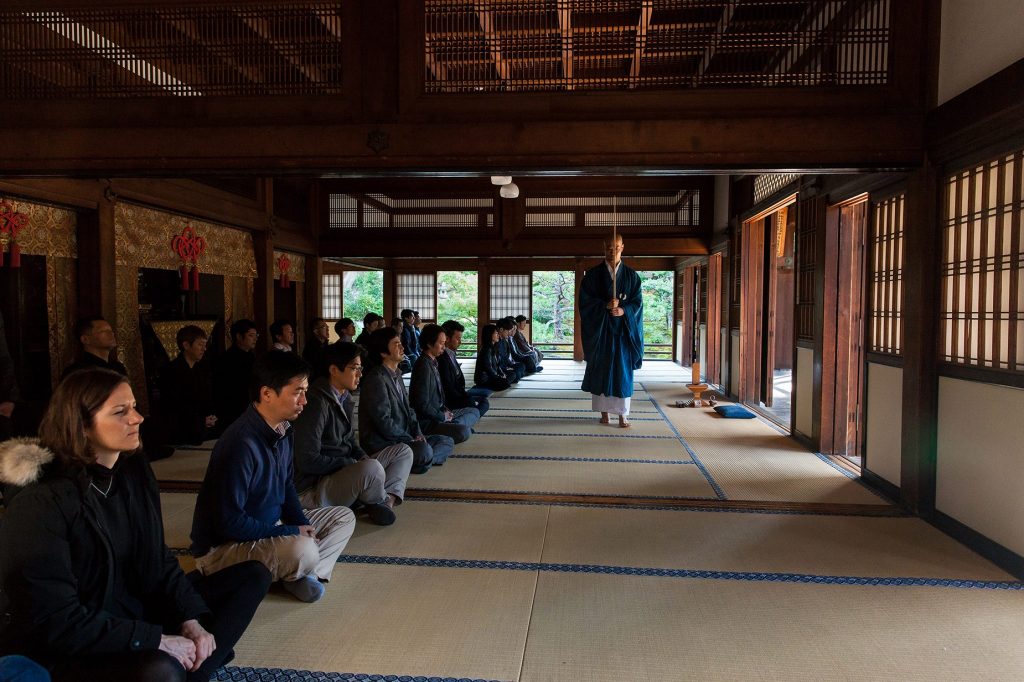
¿Podrían los diseñadores de productos y los artesanos tradicionales entenderse bien? Sin duda, sentían incertidumbre al respecto. Probablemente por eso decidieron comenzar con una meditación zen en el templo Ryosoku-in. Meditaron juntos en la tranquilidad del templo, fueron a un baño público sento y compartieron comidas en la misma mesa. A partir de ahí, su relación se forjó de forma natural. (Foto cortesía de Panasonic Design Kyoto)
Tras intercambiar ideas en repetidas ocasiones, los miembros encontraron un compañero. Nakagawa se asoció con Takahiro Yagi, sucesor del fabricante de latas de té artesanales más antiguo, con una maestría ancestral.
Basándonos en la forma de las cajas de té, nos propusimos rápidamente crear altavoces con una caja de té. El primer reto al que nos enfrentamos fue encontrar la manera de crear algo que no solo tuviera un aspecto atractivo, sino que también incorporara el espíritu de la artesanía tradicional. Queríamos ir más allá de lo superficial, como recubrir el altavoz con laca urushi o fabricar la cubierta de bambú. También consideramos seriamente otras ideas de proyectos, como combinar un batidor de té matcha con una afeitadora electrónica para crear un batidor de té electrónico. Ahora, al recordarlo, solo puedo reírme (risas).
Los miembros de GO ON nunca se mostraron entusiasmados en las reuniones en la mesa. Rara vez parecían interesados en los hermosos bocetos que el equipo de Nakagawa preparaba en las pantallas de computadora.
Sin embargo, ya sean solo bocetos o no, en cuanto les mostramos el objeto real, un objeto tridimensional, su mirada cambió de repente y se entusiasmaron (risas). Pensé: «Así es la vida de una persona dedicada a la artesanía».
Nakagawa comenta que hubo muchas ocasiones en las que sintió que la verdadera esencia de la artesanía se revelaba al comunicarse con los miembros de GO ON. Lo crucial es la sensación de las manos: Fue una experiencia reveladora para Nakagawa, quien sintió cómo la profunda presencia de la artesanía de Kioto aprovecha al máximo las manos de los artesanos expertos.
Un nuevo camino abierto por la artesanía que habla a la sensibilidad
Nakagawa valoraba especialmente "lo que puede deleitar nuestros sentidos". Por ejemplo, el peso confortable que se hunde en las palmas de las manos. Un objeto que, con solo colocarlo allí, podía cambiar la sensación del aire a su alrededor y crear una atmósfera diferente. Estaba decidido a crear ese aura.
Tocar, escuchar, sentir. Al experimentar una resonancia con nuestros cinco sentidos, podemos sentir una afinidad con algo. El deseo de tenerlo cerca y tocarlo. Pensé que, si logramos que la gente sienta eso, enriquecería nuestras vidas en el futuro.
Primero, eligieron latón como material para la lata de té. El sutil tono de color y la forma en que el brillo y la tonalidad cambian con el paso del tiempo son los atractivos del latón. La sensación táctil que se percibe al tocarlo no es rígida. Apreciar el envejecimiento de un producto fue una nueva forma de apreciar los valores. La forma en que la tapa se desliza suavemente hacia abajo y se cierra herméticamente ya es el sello distintivo de las latas de té de KAIKADO; sin embargo, Nakagawa solicitó que la velocidad de caída de la tapa fuera aún más lenta.
Recuerdo que se me puso la piel de gallina la primera vez que abrí y cerré una lata de té KAIKADO. Por eso quise ser especialmente meticuloso con el cierre de la tapa. Además, como se siente mejor al sostenerla cuando hay peso y porque puede mejorar la calidad del audio, el grosor de la placa de la lata se cambió de dos capas de 0,5 mm a una de 0,8 mm para la capa interior. Creo que incluso 0,3 mm fue un gran cambio para quienes las fabrican a mano.
Hubo momentos en que las opiniones de Nakagawa y Yagi discreparon, pero compartían el mismo objetivo: crear mejores productos. La fusión de la electrónica y la artesanía se fue revelando día a día, a medida que se acercaba la fecha de finalización. Tras casi un año entero, gracias a las numerosas pruebas y errores de las parejas, se completaron los diez prototipos. El fruto de su trabajo se presentó en el Salón Internacional del Automóvil de Milán de 2017. Allí, lograron el reconocimiento mundial, incluyendo el Premio a la Mejor Narrativa.
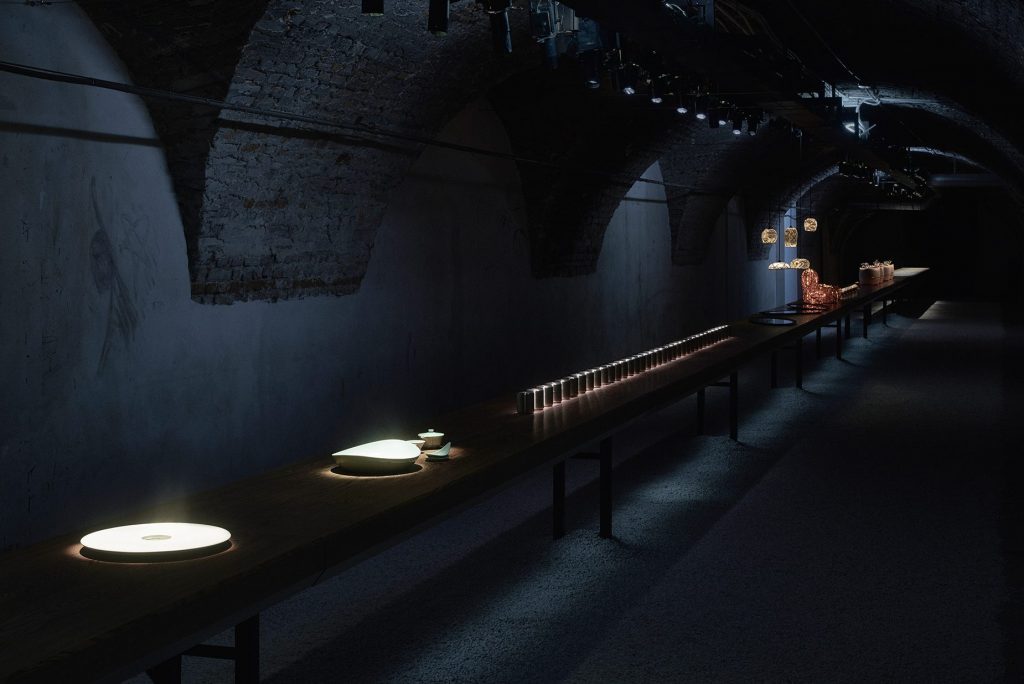
(Foto proporcionada por Panasonic Design Kyoto)
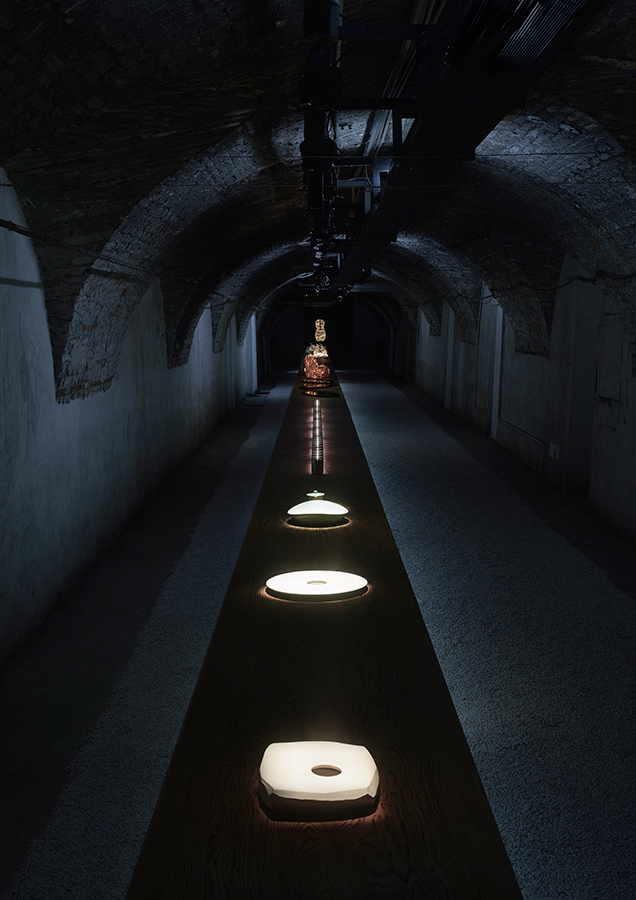
El recinto ferial del Milano Salone. El diseño del producto, impregnado de sensibilidad japonesa, y la atractiva presentación narrativa recibieron excelentes elogios de un gran número de personas. (Foto cortesía de Panasonic Design Kyoto)
Artesanía y electrónica: Apelando al corazón del mundo con el potencial del “Hecho en Japón”
Posteriormente, el equipo del proyecto KADEN Lab. de Kioto procedió a su segundo acto, estableciendo el nuevo concepto del proyecto: «La electrónica se une a la artesanía: fenómenos del grabado». Desarrollaron experiencias que conectan con los cinco sentidos para crear cinco nuevos mundos interdisciplinarios con elementos como el fuego, el sonido, la luz y el viento.
Y, sorprendentemente, ya están maniobrando para comenzar su tercer proyecto. Aunque esta vez no se conformarán con solo crear los productos. "Queremos producirlos como productos comerciales para poder ofrecer lo que creemos que mejorará la vida de nuestros clientes", enfatiza Nakagawa.
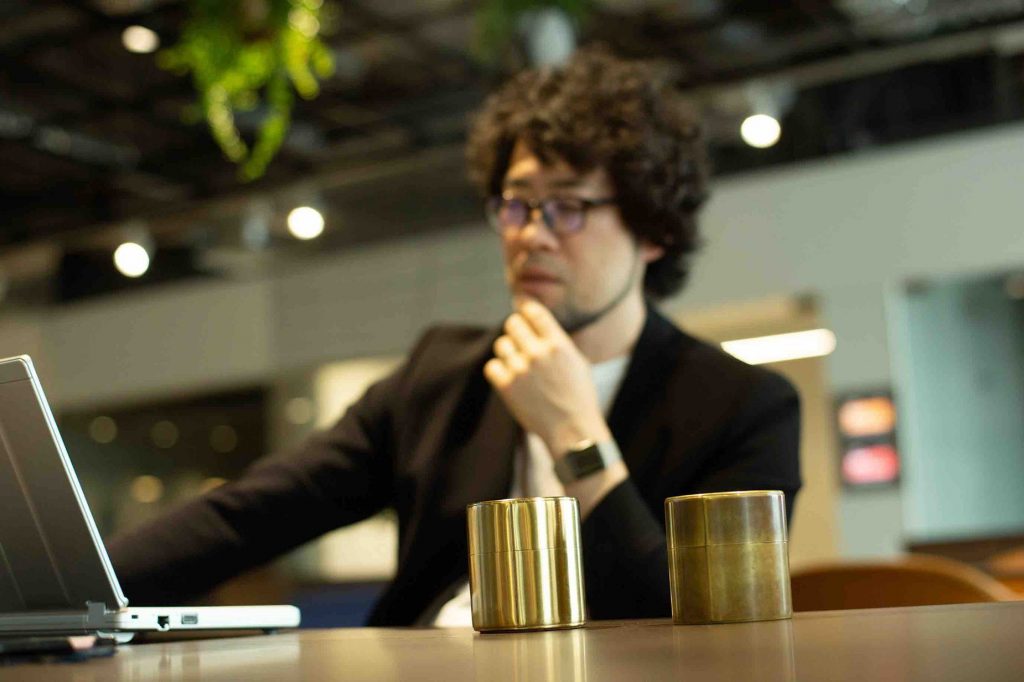
Ahora, estamos en la etapa de tener que luchar con los sectores de ingeniería y negocios, en el buen sentido, para comercializar el Kyo-Zutsu (risas). Poder ofrecer nuestras inspiraciones en su máxima expresión a los consumidores: creo que eso contribuiría a una vida más plena para las generaciones futuras.
El primero de la serie de proyectos, "productos que conectan con los cinco sentidos", se ha ganado una excelente reputación internacional y se espera su comercialización a nivel mundial. Se ha decidido oficialmente que el sistema de audio Kyo-Zutsu de Nakagawa salga a la venta alrededor de la primavera de 2019.
El énfasis en el valor de la esencia auténtica, la experiencia de conectar con los sentidos y su aplicación práctica. El hermoso electrodoméstico que integra estos tres elementos: Kyo-Zutsu.
Kyo-Zutsu se creó aprovechando la esencia de la sensibilidad de Kioto, arraigada en el compromiso de buscar, proteger y transmitir la belleza funcional. ¿Qué podría aportar a nuestra vida cotidiana? Tan solo pensar en lo que podría aportar a nuestra vida diaria es suficiente para acelerar el corazón. La iniciativa de Panasonic Kyoto Design nos muestra, sin duda, una nueva forma de pensar en los electrodomésticos. Esperamos con interés su desarrollo en el futuro.
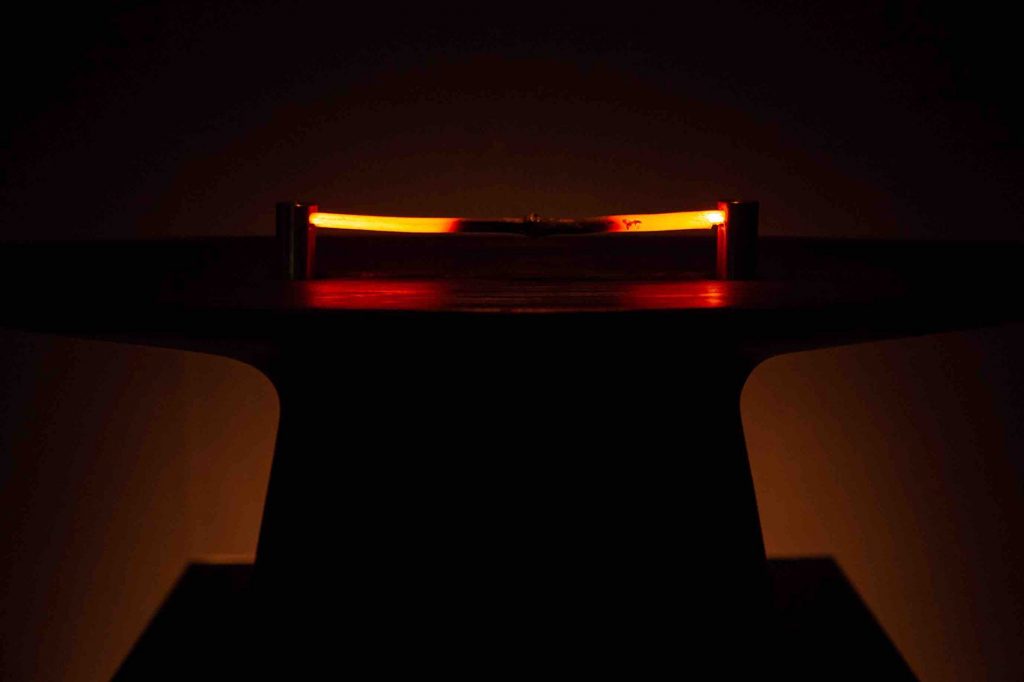
(Foto proporcionada por Panasonic Design Kyoto)
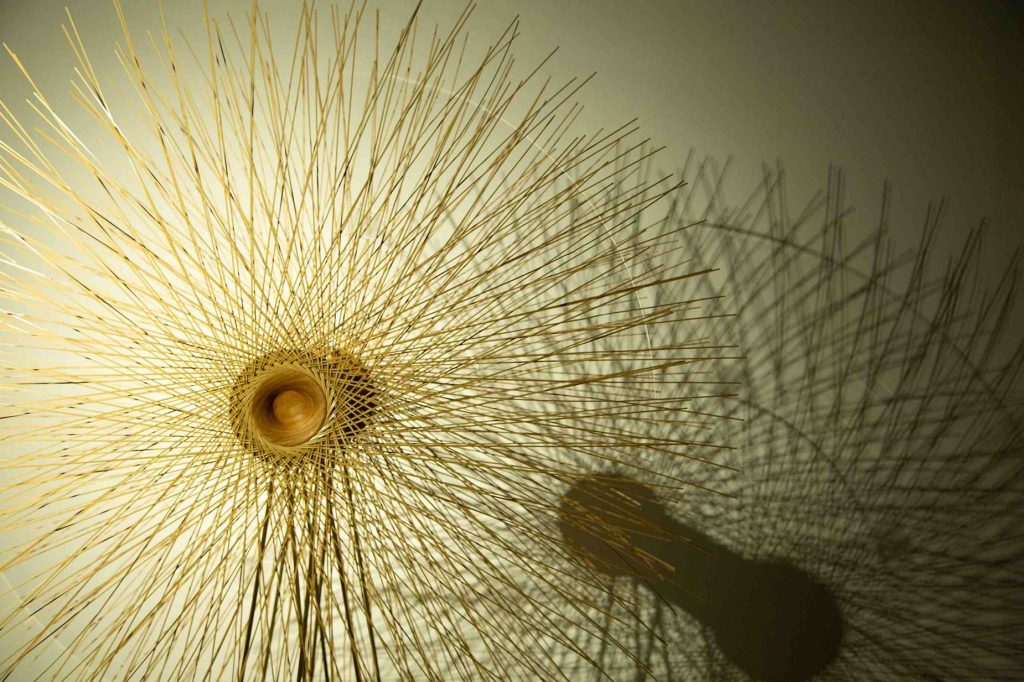
(Foto proporcionada por Panasonic Design Kyoto)
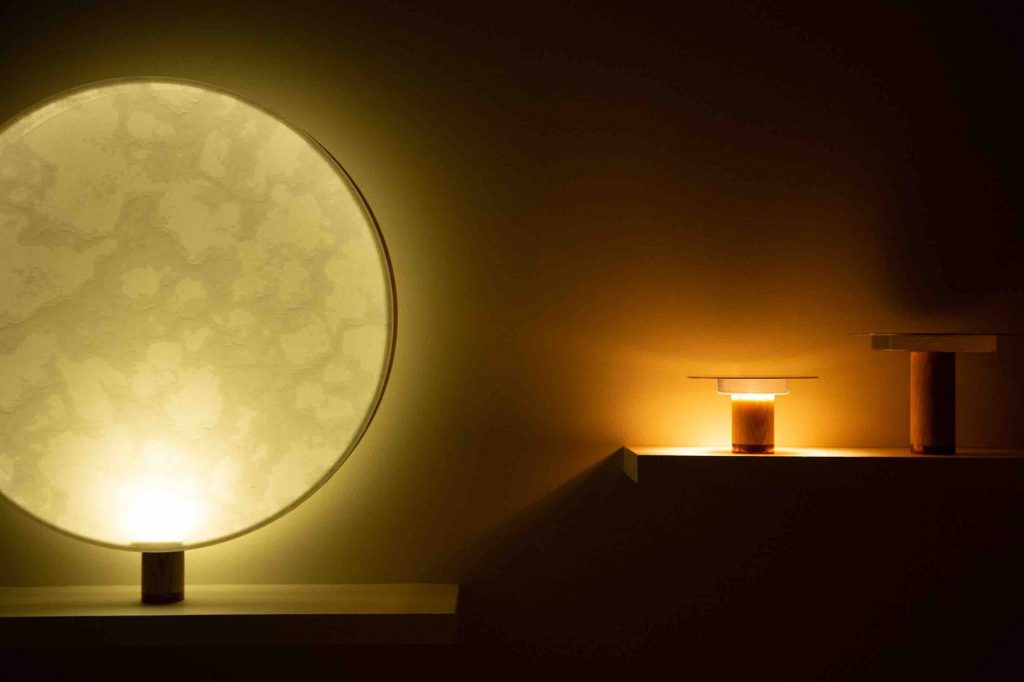
El segundo producto de la serie "La electrónica se une a la artesanía: fenómenos del grabado" del proyecto KADEN Lab. de Kioto. El calor y la belleza de las llamas ardientes, la comodidad de la suave brisa: emanan de lo que las personas han experimentado desde tiempos inmemoriales, los sentidos y recuerdos primitivos profundamente arraigados en la esencia de nuestra existencia física. La experiencia de entrar en contacto con estos sentidos es esencial para vivir bien. (Foto cortesía de Panasonic Design Kyoto)
INFORME
TEXTO DE MAE KOORI
FOTOGRAFÍAS DE KUNIHIRO FUKUMORI
18.08.09 JUE 19:00

